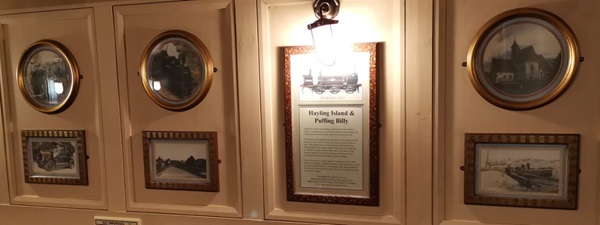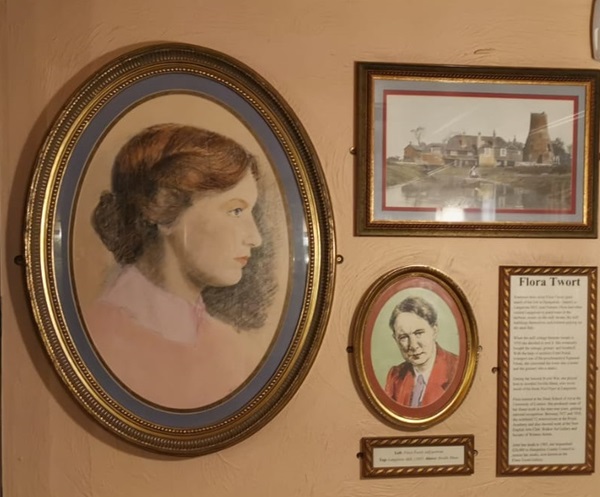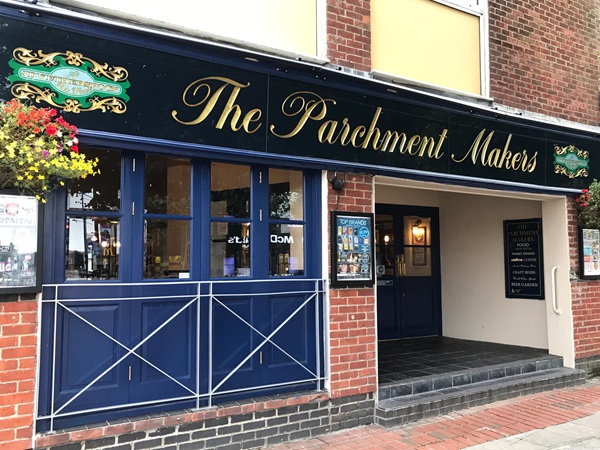1 Park Road North, Havant, Hampshire, PO9 1HE
Parchment-making was once an important industry in Havant, recalled by this pub’s name. Havant parchment was used for important treaties, such as the Treaty of Versailles. The town’s parchment was particularly prized for its whiteness, since all other types tended to be yellow. Its unique colour has often been attributed to chalk in the water from Homewell spring, close to this pub. Havant’s last parchment yard closed in 1936.
Text about Hayling Island and Puffing Billy.

The text reads: Shaped like a ship’s bell, Hayling Island lies five miles south of Havant. A thousand years ago, Hayling Island was much larger, but continual erosion by the sea has reduced it to the present size.
The island was first linked to the mainland by a road bridge in 1824 and by rail in the 1860s. the first mile opened to goods traffic in 1865. The embankment was built, but kept being washed away, forcing plans for the southern section of the line to be abandoned. A wealthy land agent, Francis Fuller, came to the rescue. Fuller became chairman of the railway company and proposed a new overland route, skirting rather than crossing the island.
After a few hiccups, it finally opened to passenger trains in 1867. From 1911, specially-designed locomotives were introduced on to the line. Known affectionately as The Hayling Billy, they operated on the line until it closed in 1963. Some still survive on private railways and the Isle of Wight.
Text about Flora Twort.

The text reads: Somerset born artist Flora Twort spent much of her life in Hampshire – latterly at Langstone Mill, near Havant. Flora had often visited Langstone to paint boats in the harbour, swans on the mill stream, the mill buildings themselves and children playing on the mud flats.
When the mill cottage became vacant in 1930 she decided to rent it. She eventually bought the cottage, granary and windmill. With the help of architect, Ernst Freud, youngest son of the psychoanalyst Sigmund Freud, she converted the tower into a home and the granary into a studio.
During the Second World War, she played host to novelist Neville Shute, who wrote much of his book Pied Piper at Langstone.
Flora trained ay the Slade School of Art at the University of London. She produced some of her finest work in the inter-war years, gaining national recognition. Between 1927 and 1938, she exhibited 12 watercolours at the Royal Academy and also showed work at the New English Arts Club, Walker Art Gallery and Society of Women Artists.
After her death in 1985, she bequeathed £20,000 to Hampshire County Council to restore her studio, now known as the Flora Twort Gallery.
External photograph of the building – main entrance.

If you have information on the history of this pub, then we’d like you to share it with us. Please e-mail all information to: pubhistories@jdwetherspoon.co.uk